Starving to death: Somalia’s worst drought in decades raises fears of famine
Children and cattle are dying while hundreds of thousands of people have been displaced by the drought, posing a huge challenge for a government short on cash and solutions, reports Fred Harter in Jubaland

On the far edge of a camp for displaced people in southern Somalia, a small grave has been dug into a patch of dusty ground. It is for four-year-old Ubah Ali, whose frail body lies a few feet away, wrapped in an orange and blue sleeping mat.
The day before, Ubah’s pregnant mother, Juhara, had taken her to a mobile health clinic on the camp. The girl had been sick for two months, so wasted by malnutrition that she could not eat solid food without vomiting.
The doctors’ visit came too late. That night, Ubah had a severe bout of diarrhoea. By morning she had stopped breathing.
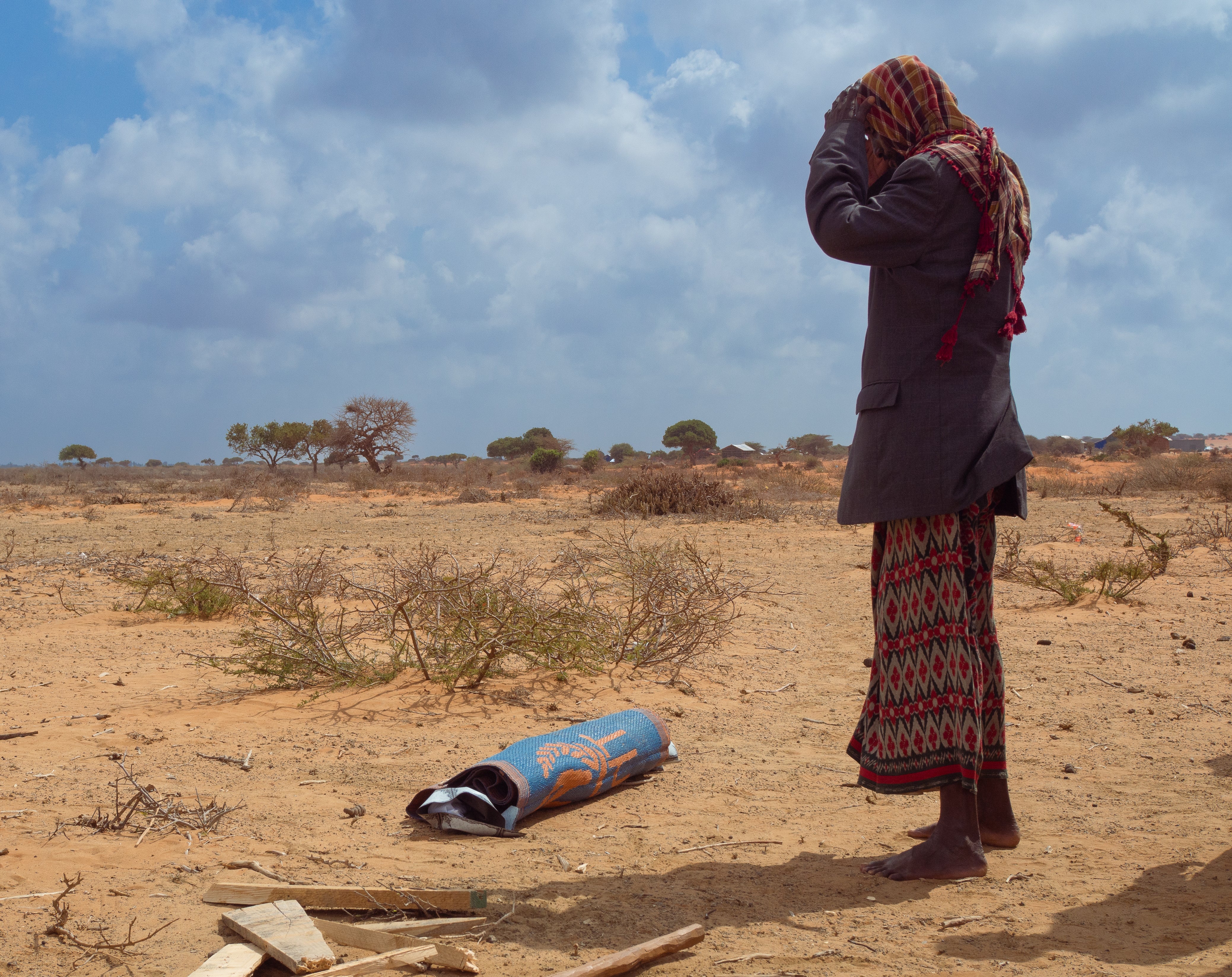
Juhara now fears for the lives of her three other children and unborn baby. The weight of the youngest, 14-month-old Abdifatah, swings between 6kg and 10kg despite several trips to a clinic in the nearby town of Kismayo.
“I am pregnant, but I do not worry for myself,” Juhara told The Independent. “I worry only for my children.”
Like the thousands of others in this camp, located near the settlement of Luglow in Somalia’s Jubaland state, the family were uprooted from their home by a drought that experts believe was caused by climate change.
Three successive dry seasons turned Juhara’s farmland to dust and killed her animals, leaving her penniless. She reached the camp two weeks ago after travelling for seven days, carrying her children on her back. Some residents of the camp made journeys of up to 300km. Most brought only what they could carry.
“The children were better when they were back home,” said Juhara. “When they had milk to drink, they were healthy ... in this camp, their health worsened.”
In total, the UN estimates that the drought threatens the livelihoods of 13 million people in the Horn of Africa, a fragile region already wracked by conflict and increasingly prone to extreme weather events. Current conditions are the driest for more than 40 years.
If there is not an urgent response, it means more and more people are going to die
The impact has been particularly extreme in Somalia, where half a million people have been forced from their homes in search of aid and pasture for their animals. One-third of the 15 million-strong population is affected, with a recent assessment by Save the Children finding that 700,000 animals died in just two months last year.
So far only 2.3 per cent of the UN’s humanitarian appeal of $1.46bn (£1.11bn) for Somalia has been met. Charities have said they may have to suspend emergency relief programmes due to a lack of funding while Unicef has warned that some regions are in “near-famine”.
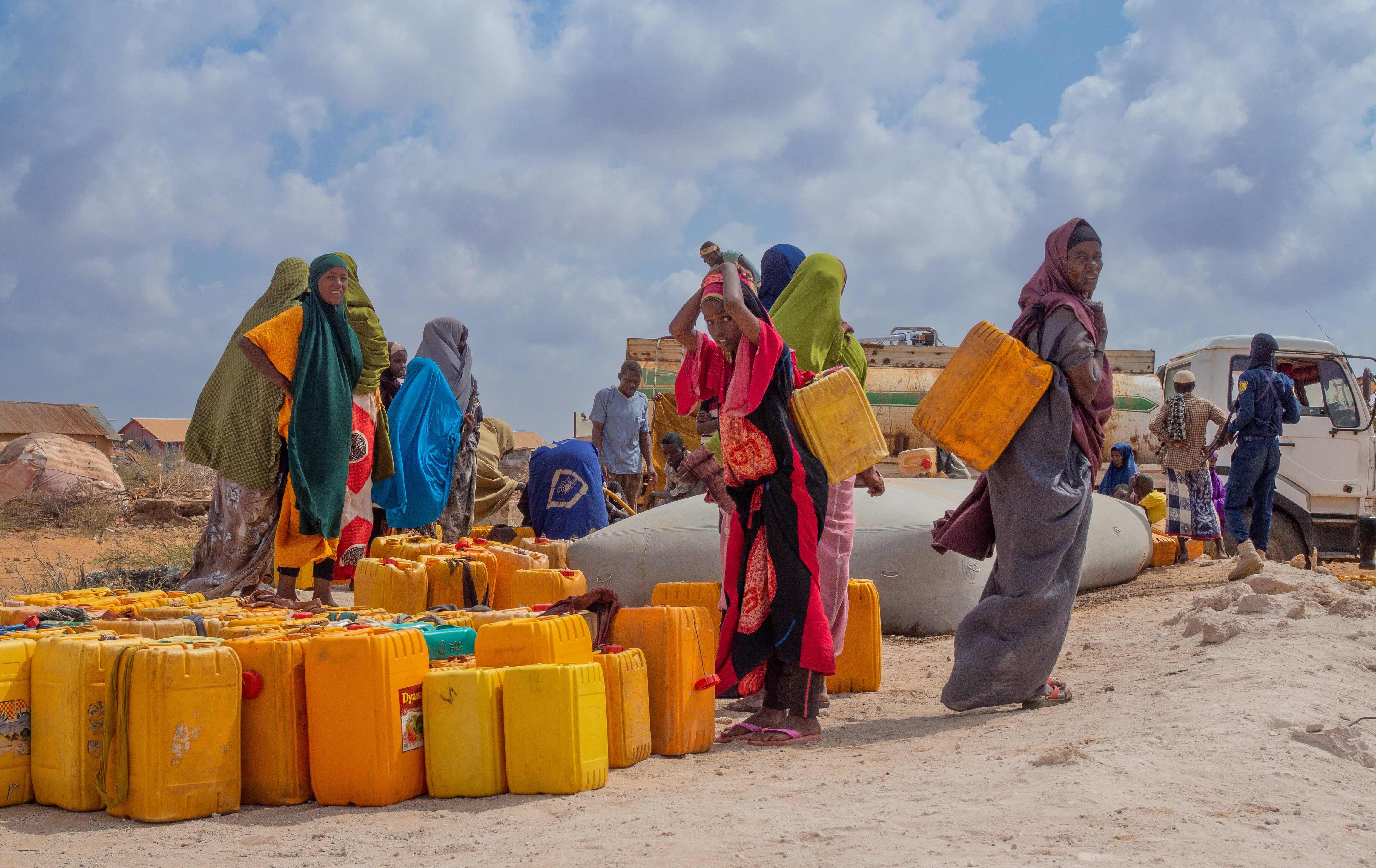
“Somalia is facing a climate disaster, and it is unfolding already in the displacement of massive populations, fleeing their homes in search of life-saving assistance,” Mohamed Ahmed, operations director at Save the Children, told The Independent. “If there is not an urgent response, it means more and more people are going to die.”
Things have been made worse by a political crisis sparked last year when the country’s president Mohamed Abdullahi Mohamed – better known by his nickname Farmaajo – delayed elections initially scheduled for February 2021.
His dispute with prime minister Mohamed Hussein Roble led to men armed with rocket-propelled grenades surrounding the presidential palace in December.
Children are dying from malnourishment and the situation is getting worse every day
The US has threatened visa restrictions over the instability and donors are reluctant to keep funnelling money in the stricken country. Last month, the International Monetary Fund (IMF) warned it could shut off funding for Somalia if there are further delays to the election.
Starved of cash and caught up in political squabbles, the response of Somalia’s dysfunctional government to the drought has been sluggish.
“What’s really missing here is government leadership,” said Abdiqani Jama, an economic adviser to the prime minister. “The diaspora and the international community need to be mobilised to address the drought, but everyone is distracted by the election. If we don’t act, it will be a catastrophe.”
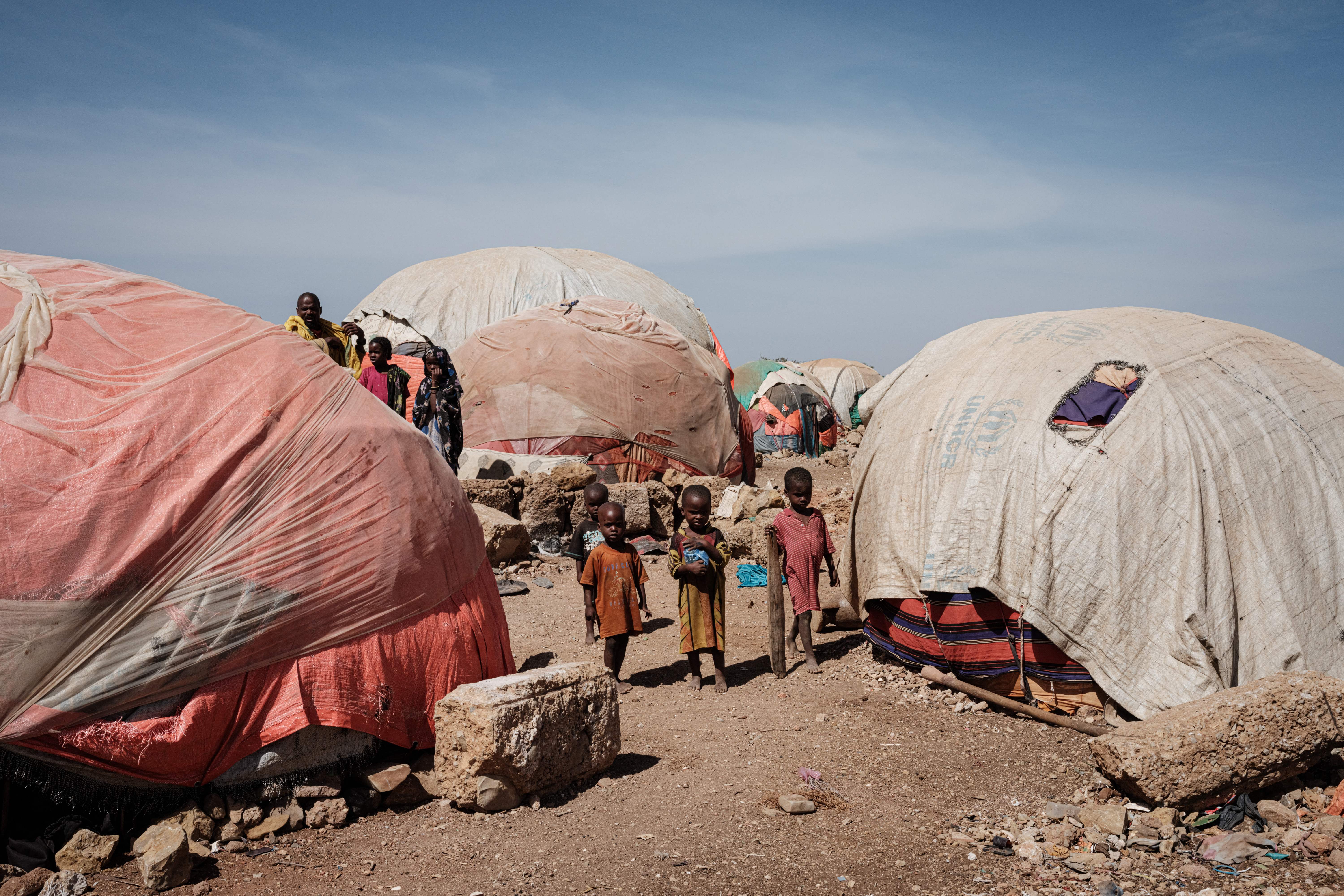
At Abdirahman Abdi Ahmed’s office in Kismayo, surrounded by high walls dressed in barbed wire to thwart suicide bombers from the Islamist group al-Shabaab, Jubaland’s minister for humanitarian affairs said his office did not have enough money for drought relief, beyond occasional water trucking and food distribution.
Instead, his ministry is relying on charitable donations from the Somali diaspora and local business owners, as well donation boxes in schools and mosques, while it waits for international donors to release funds.
“Children are dying from malnourishment and the situation is getting worse every day,” said Mr Ahmed. “The government does not have enough resources and since the election delay, donors and the international community are hesitant to act.”
Many of the people living in the ministry’s jurisdiction are cut off, living in areas controlled by al-Shabaab. Officials have no plans to reach them. In some places the Islamist group has been mounting its own relief operations, distributing food and water. They operate checkpoints just six miles from the displacement camp in Luglow.
At Kismayo’s main health centre, more than 50 children are being treated for malnourishment. One of those children is 10-year-old Maido, who lies motionless under the web of a mosquito net, and is suffering from diarrhoea and frequent vomiting. She has been unable to eat solid food for days.
Her mother, Qarto Aden Abdi, explained that they left their home district under al-Shabaab control after the drought killed their animals. They used to be a prosperous family, owning 300 head of cattle. But now only 20 remain, all of them starved and ridden by disease, making them worthless.
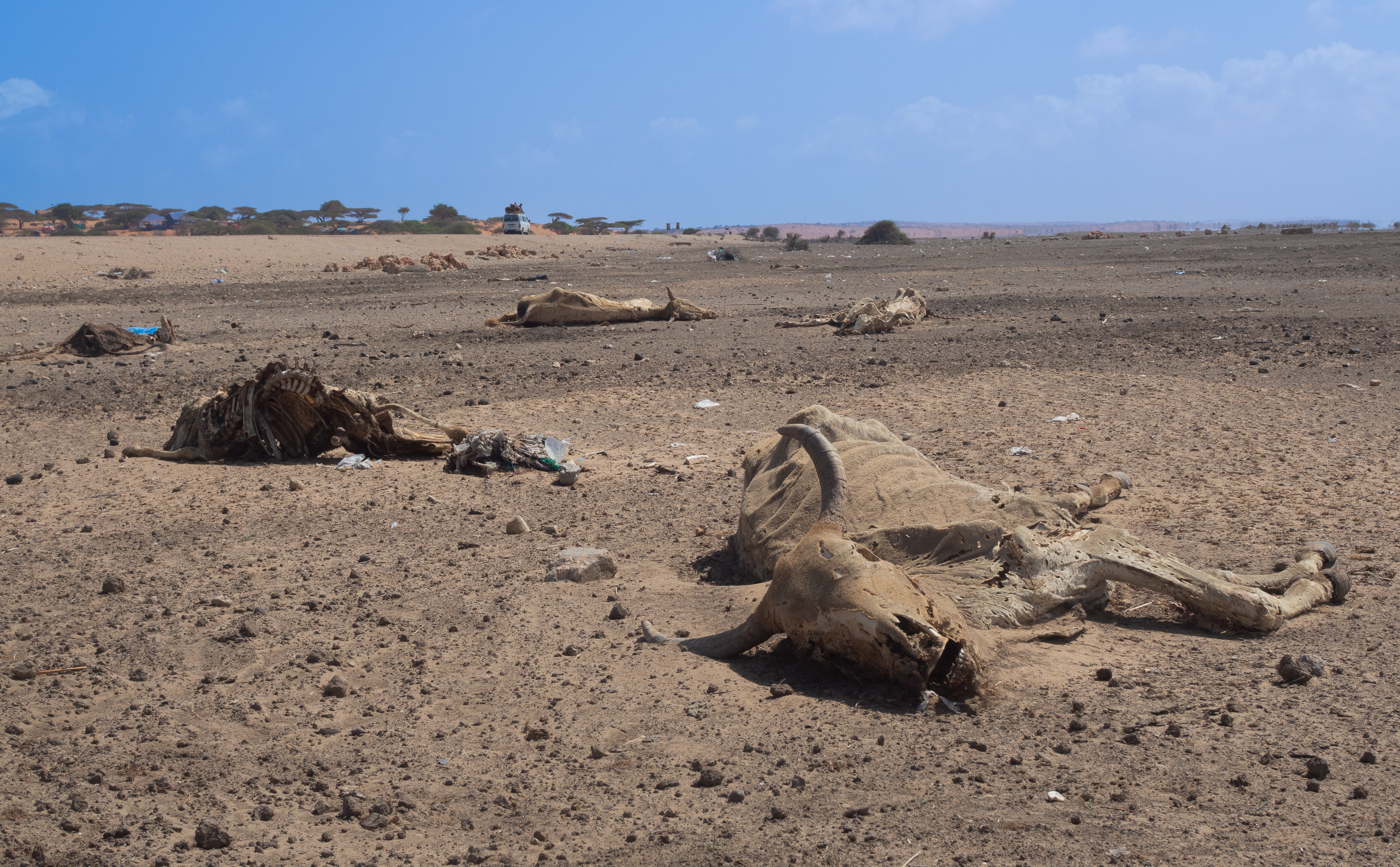
“We have no health services there because the government cannot access the area,” said Qarto. “Even the rivers have dried up, and the animals grew weak because they had no pasture or water to drink.”
Abshir Adan Mohammed, a doctor at the hospital, said 70 per cent of the children admitted to the clinic come back at least once after being discharged because of deteriorating conditions and a lack of health services in the displacement camps.
Ubah’s mother brought her to a clinic in the town before the child died.
“It annoys me”, said Mr Mohammed. “It is very painful. Some of my patients, when I discharge them, they cannot afford to pay for transportation to come back, or there are no health facilities where they are, and they die from a lack of treatment.”
In the area surrounding Kismayo town, at least 15 children died of starvation in the first week of March, according to local officials. But things could still get worse.
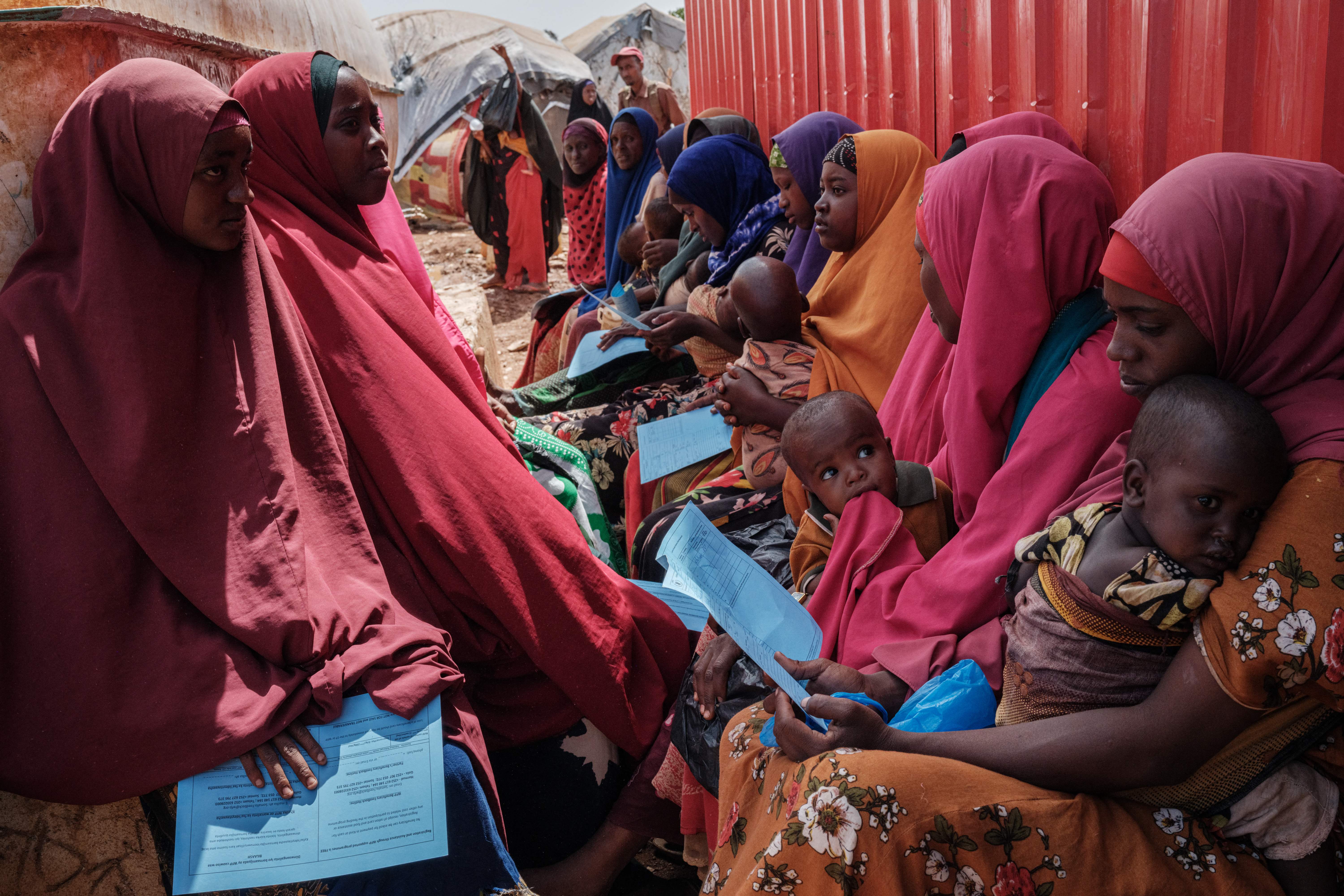
There is a worry that rain may not fall for a fourth consecutive season in April. Meanwhile, the attention of donors already reluctant to fund projects in Somalia is now focused on the war in Ukraine, which has led to vital shipments of grain from Ukraine to Somalia being delayed or suspended.
Some humanitarians fear the situation could spiral into one resembling the 2011-12 famine, which was by some distance the worst hunger crisis of the 21st century so far. An estimated 260,000 people died of starvation in Somalia during the famine. Half were less than five years old.
The main causes of the famine were severe drought exacerbated by political fighting, donors being slow to fund the response and the presence of al-Shabaab in several regions. The same factors are present in Somalia today.
Ahmed from Save the Children said funding needs to be urgently scaled up to avert a disaster on a similar scale. “It all depends on how fast the response happens, and on whether we can maintain life-saving humanitarian activities,” he said. “It is not too late; there is still time to act.”
Join our commenting forum
Join thought-provoking conversations, follow other Independent readers and see their replies
Comments


Bookmark popover
Removed from bookmarks